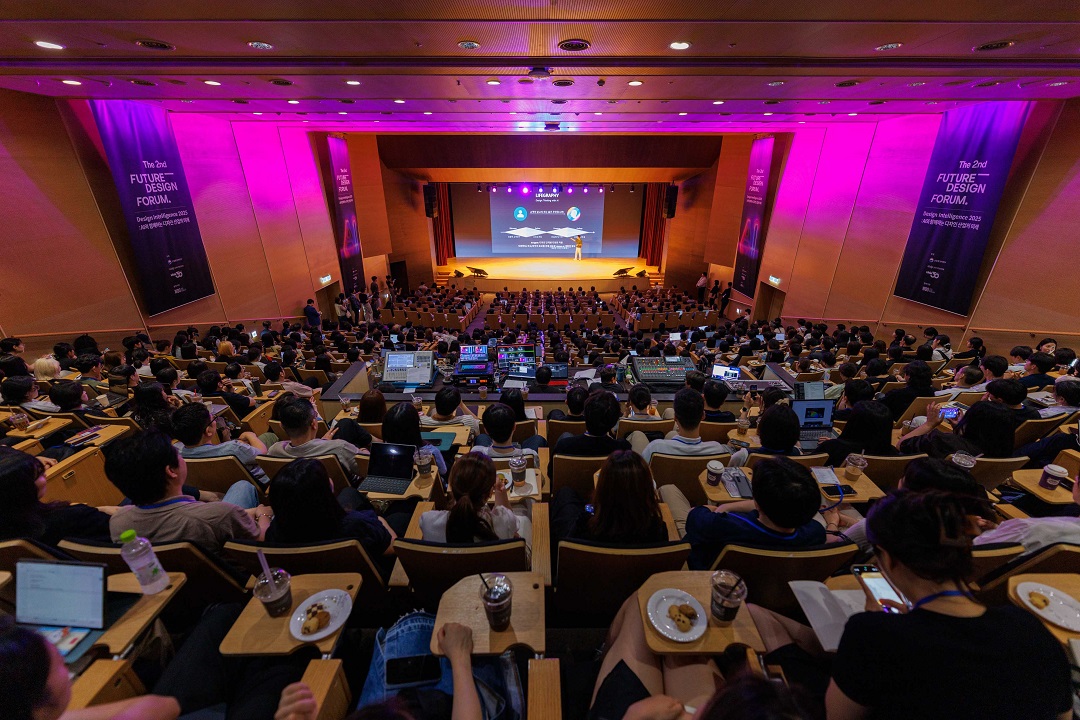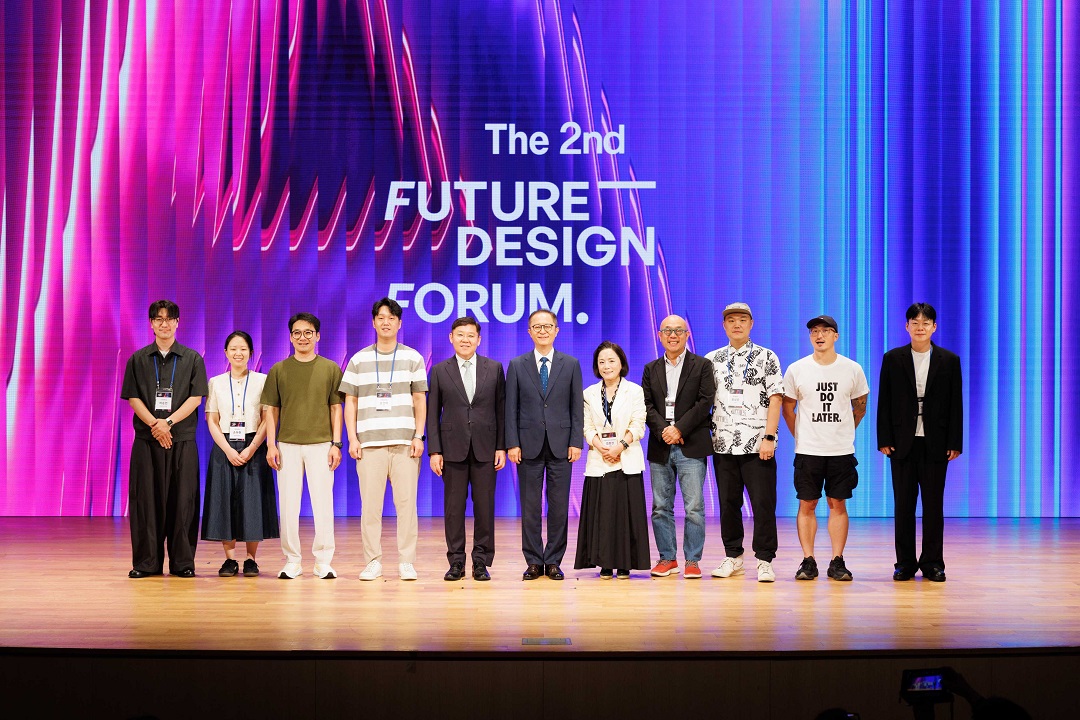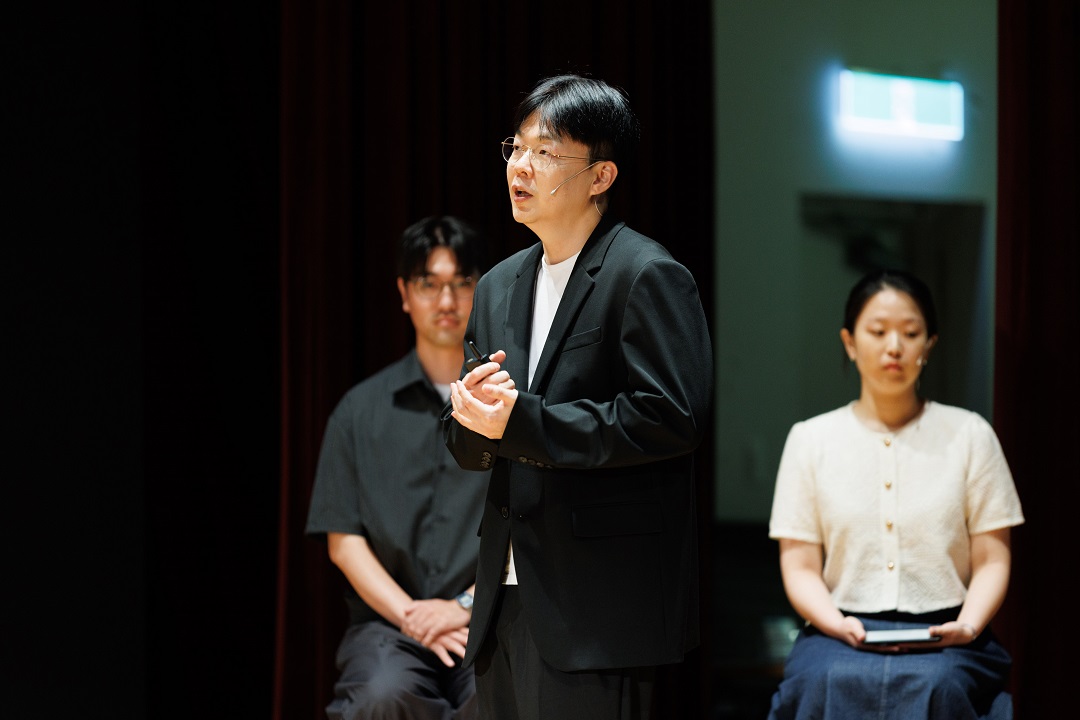News & Events

KIDP Hosts the 2nd Future Design Forum: Exploring the Role of AI in the Future of Design
- June 24, COEX, Seoul
The Korea Institute of Design Promotion (KIDP) successfully held the 2nd Future Design Forum on June 24, bringing together experts from across industry and academia to explore how artificial intelligence (AI) is transforming the landscape of design.
The forum was held in celebration of World Industrial Design Day (June 29), designated by the World Design Organization (WDO), and is set to become an annual event following its inaugural launch in 2024.
This year’s forum was themed “Design Intelligence 2025: The Future of the Design Industry with AI” and featured a range of keynote sessions, case presentations, and panel discussions on how AI is being integrated into real-world design workflows.


President Yoon Sang Heum stated: “AI is no longer just a tool—it is becoming a true partner. As the pace of AI innovation accelerates, the design industry must be ready not only to adopt new technologies, but also to redefine its own practices.”
He emphasized that KIDP will continue investing in AI-centered R&D, policy development, and programs to strengthen the global competitiveness of Korea’s design industry.

In the opening keynote, Jidong Yim, Executive Advisor at LG Electronics’ CX Center, presented “…And Designing for People”. Yim addressed the anxiety many designers feel in adapting to the AI era, stressing the need for a mindset shift.


Sungchan Ko, Designer at Samsung Electronics’ DA Design Team, shared his perspective on how the younger generation of designers is already embracing AI. Drawing from recent student workshops, he emphasized that humans will continue to imagine and create, while AI becomes a powerful problem-solving partner.
Student speakers - Seungmin Ha (Konkuk University, Industrial Design), Ahyeon Son (Kookmin University, AI Design) - added firsthand examples.


Suntae Kim, CTO and Co-founder of NdotLight, showcased the latest in AI-based 3D design tools such as Text to CAD, which enables designers to generate industrial design outputs directly from natural language. He stressed that while AI can’t replace everything, tools like large language models (LLMs) can significantly increase efficiency when strategically applied.


Sungjoon Hong, CDO of Banksalad, presented data-driven evidence showing how productivity improved at Banksalad through AI integration. Emphasizing that technology alone does not solve user needs, he called on designers to prioritize understanding the problem first, and then finding the right technology.

Sanghoon Kim, former Director at China's NetEase Design Center, shared insight from his experience introducing AI design tools to a large Chinese tech firm. His takeaway was: don’t aim to overhaul everything at once. Instead, start with small, repetitive tasks and gradually expand AI integration by focusing on efficiency and strategic implementation.

The forum concluded with a panel discussion moderated by Ken Nah, Professor at Dongseo University and WDO Board Member. The five main speakers discussed the evolving identity of the designer and answered audience questions.


When asked what qualities would define the future designer, responses included:
- Taste and craftsmanship
- Empathy and openness to AI
- Trend sensitivity and experimentation
- Business acumen and communication
In one sentence, the panelists summarized the future designer as:
- A director
- A communicator
- A person who asks rich questions
- A visual problem-solver